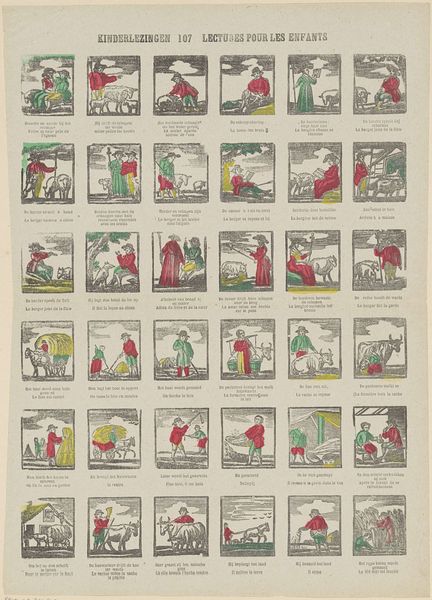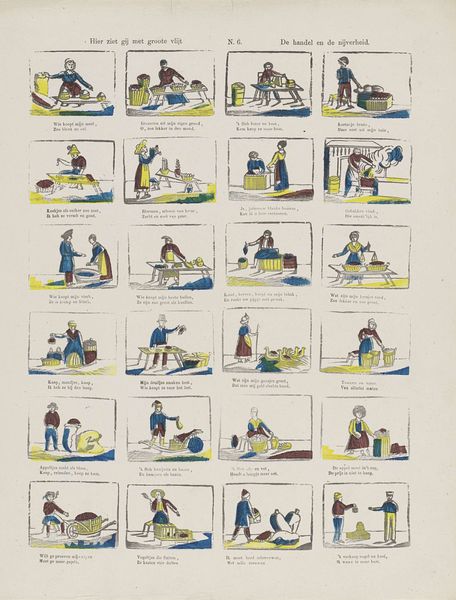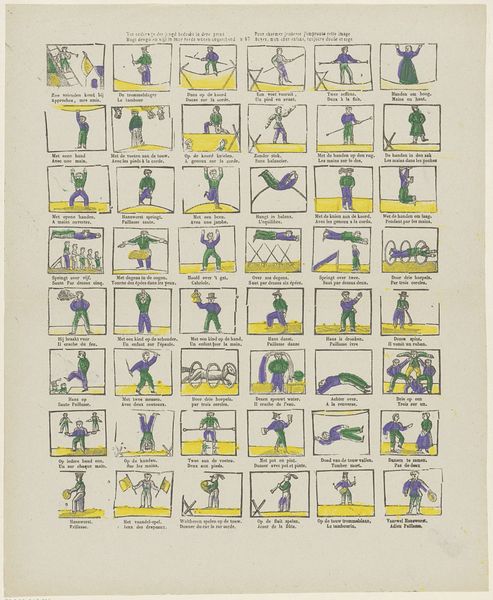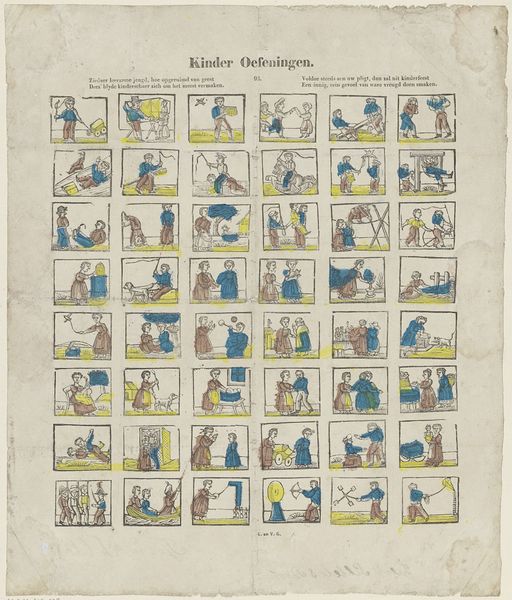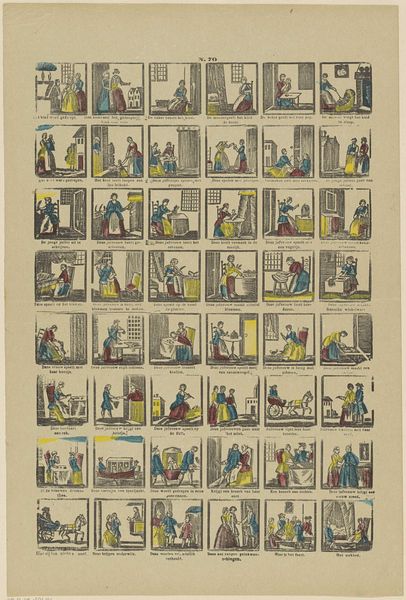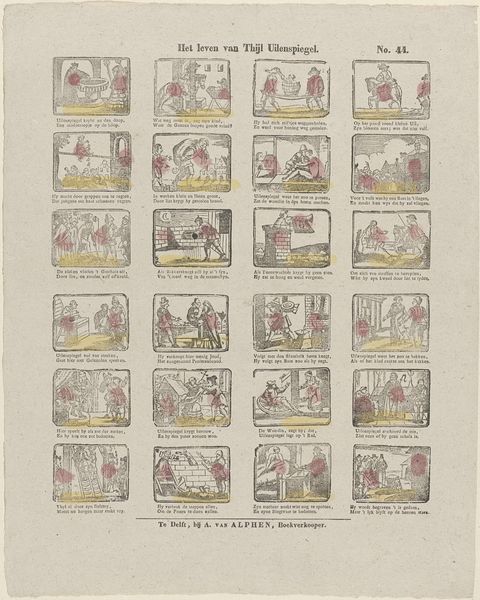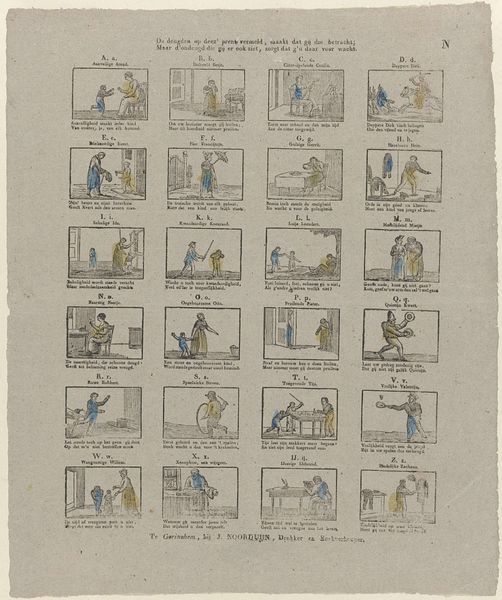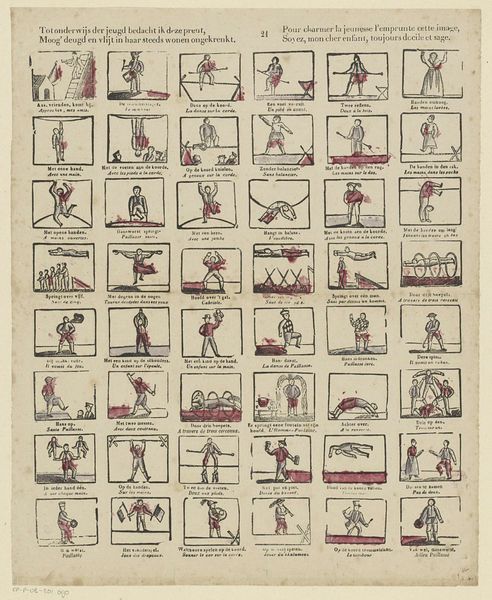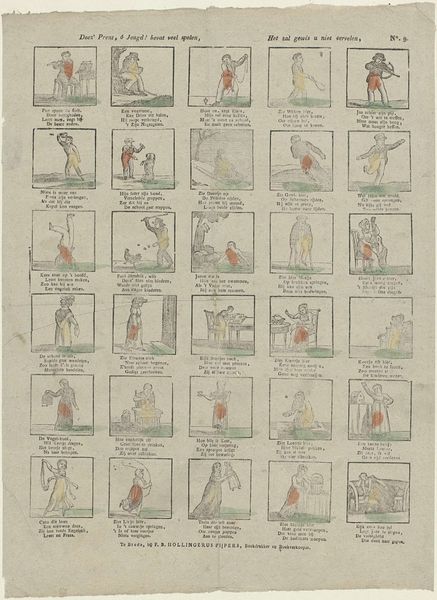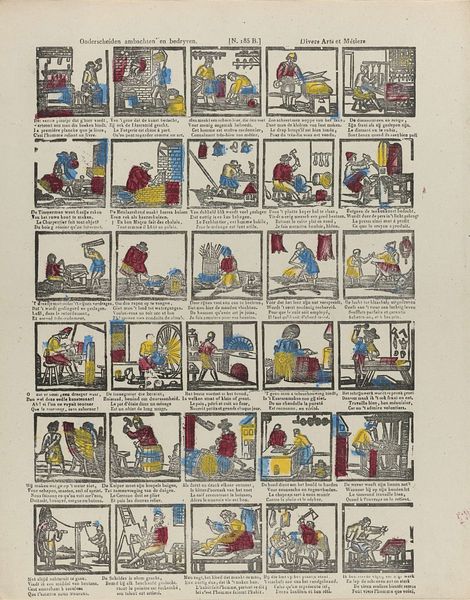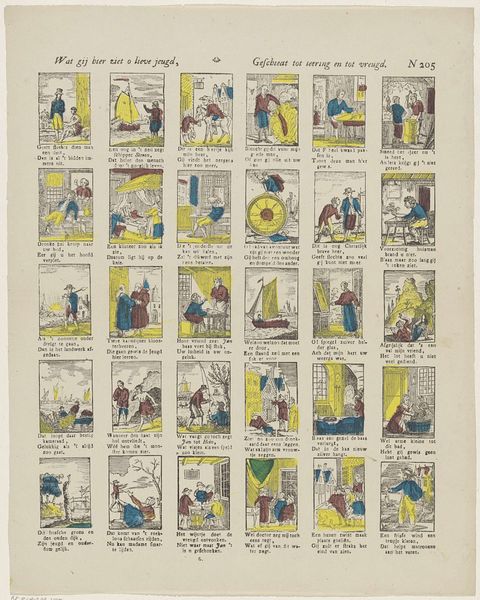
Hier hebt gij, jeugd, beziet het wel, / 't vermaaklijk honde- en apenspel 1856 - 1900
0:00
0:00
print, engraving
#
narrative-art
# print
#
dog
#
genre-painting
#
engraving
Dimensions: height 375 mm, width 305 mm
Copyright: Rijks Museum: Open Domain
Curator: At first glance, it looks like a whimsical comic strip, doesn't it? Almost like a visual nursery rhyme. Editor: Indeed. This is a late 19th-century engraving attributed to Glenisson & Zonen titled "Hier hebt gij, jeugd, beziet het wel, / 't vermaaklijk honde- en apenspel". It translates to “Here you have, youth, look at it well, / the amusing dog and monkey game.” It appears to be a hand-colored print consisting of numerous small, sequential scenes. Curator: Given the mass production of these prints and the narrative content, I wonder about the target audience and how these would have been disseminated in society. It’s a stark reminder of art's democratizing potential in the industrial age. Editor: From a material perspective, the cheap paper and printing suggest widespread circulation, reflecting growing consumerism during the period. The simplistic coloration—mostly blues and yellows—suggest a rushed, affordable production process. I am drawn to how accessible printmaking had become at that time. Curator: Notice how dogs are prevalent figures throughout the scenes. What cultural norms dictated such themes for juvenile consumption at the time, especially from the context of Colonial Belgium and the animal abuse and exploitation for circuses in Belgium during the turn of the century? The inclusion of dogs, which has a link to working-class association is intriguing. It is quite different when compared to other European contexts that place dogs as aristocratic companions during that same time. Editor: Absolutely. These visual narratives aimed at children often reflect the pedagogical values—or the desired values—of society. Did these teach specific social behavior by showcasing the "playful" relationship between men and animals or the importance of education as seen through playful learning scenarios? Curator: The print’s didactic tone points towards instruction. “Look at it well," as the title implores. The series shows comical yet clumsy interactions—youthful exuberance contrasted by likely consequences. I’d want to dig into related media from the time; how might societal reforms or religious orders employed imagery of animals as educational methods. Editor: I appreciate how analyzing the physical properties of a seemingly straightforward children's print brings out intricate observations regarding labor, audience, social values, and colonial politics in Belgium during that time!
Comments
No comments
Be the first to comment and join the conversation on the ultimate creative platform.



